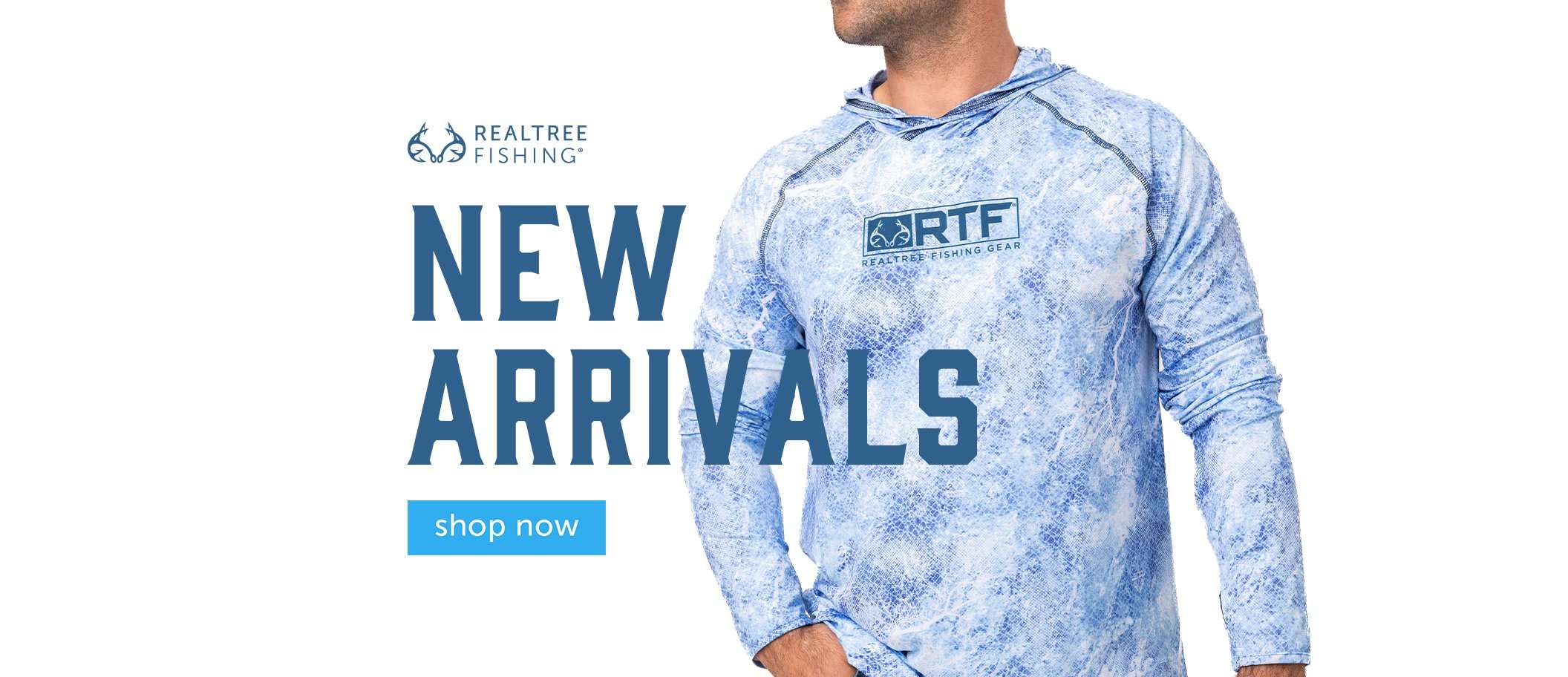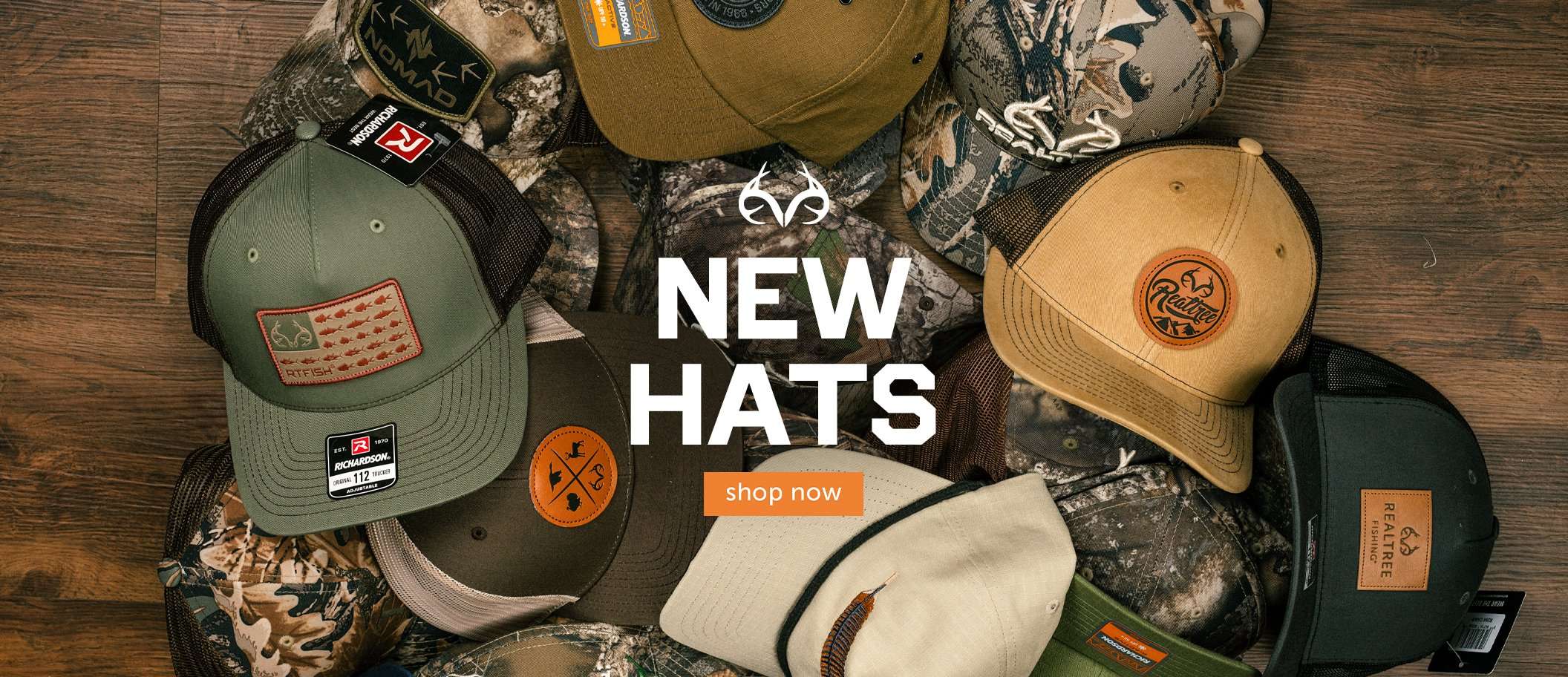Should your next deer gun be a magnum revolver or single-shot pistol?
I was in camp with a new hunter who’d been thinking about taking up bowhunting because she really liked the idea of being close to game. But she enjoyed shooting guns, too, and so I suggested she try my revolver — a Taurus Raging Hunter chambered in .357 Magnum, topped with a Trijicon SRO red-dot sight. I have it dialed in with Hornady 140-grain FTX LEVERevolution ammo and know that it’s easy to shoot, with mild recoil, and effective on whitetails out to 50 yards or so.
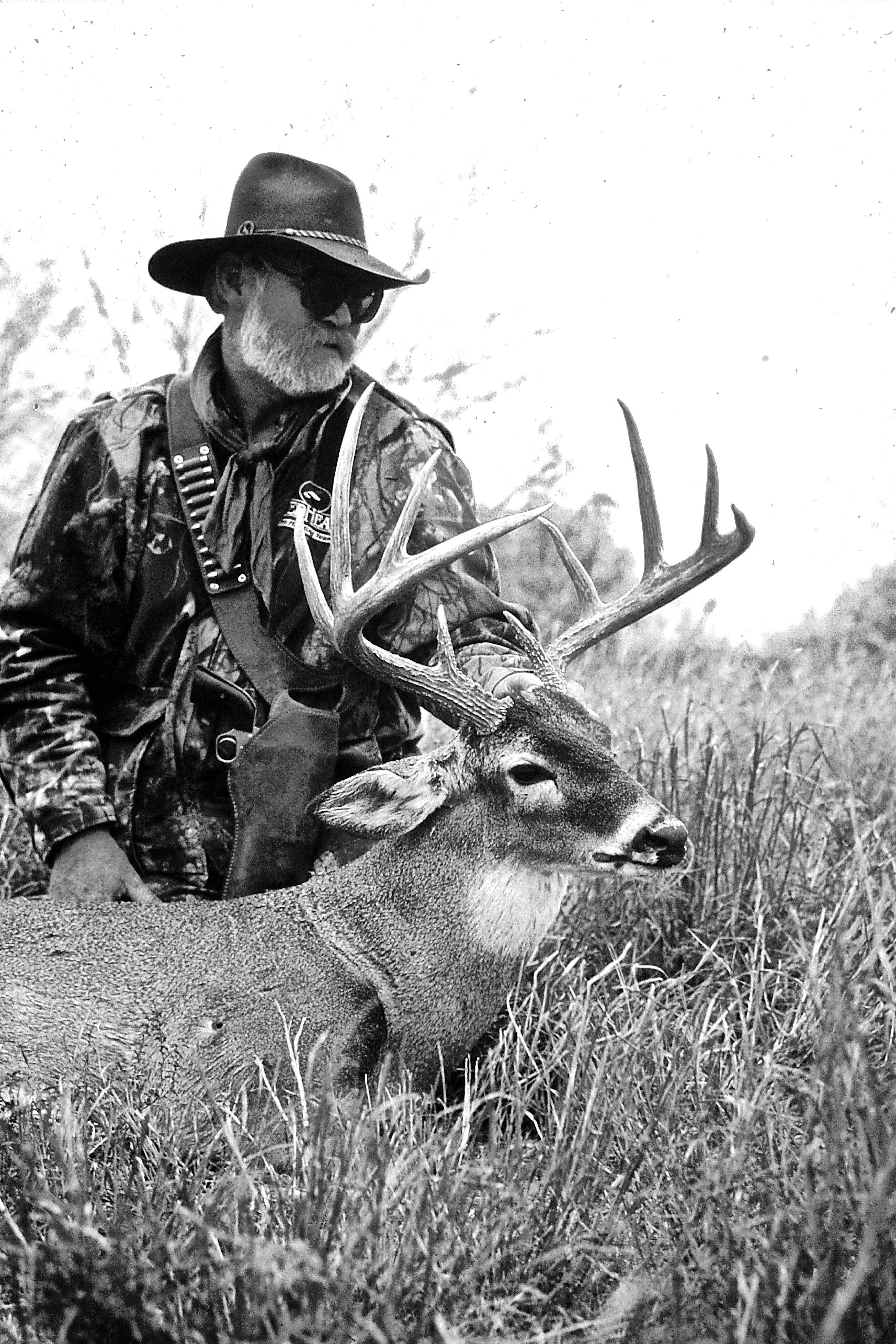
Handgun hunting combines the challenge of getting bow range close to game animals with the fun of shooting a firearm. Photo by Larry Weishuhn
She rested the revolver on a flat-topped post, took aim at a plastic water bottle laying on the ground about 25 yards away, and squeezed the trigger. The bottle exploded, and her smile told the story. “That was a blast, literally and figuratively! Can I do it again?” she asked.
I knew we’d need more water bottles.
REVOLVER TALK
Back at the campfire, we talked a bit more about handgun hunting. I explained that when it came to revolvers, my personal preferences for deer-sized animals are the .44 Magnum and .454 Casull. With those, I can cleanly kill animals to 100 yards or beyond. But that doesn’t mean I wouldn’t rather get closer. To me, a .357 Magnum is the minimum caliber for deer, but after seeing the lady shoot more water bottles, I was confident that any deer that got close enough would be destined for the meat pole. And I was right. Later that afternoon, she shot her first deer with a handgun, a mature doe that was hit perfectly through the vitals and dropped in her tracks.
Handgun hunting is great fun. And as with bowhunting, there are distance limitations and the need for plenty of practice. Handgun hunting requires range time to learn the capabilities of the gun you’re shooting and your capabilities with it. Like any other firearm, the bullet goes where the barrel is pointed when you pull the trigger!
In the case of the new handgun hunter, I explained the difference between single-action and double-action revolvers. The hammer of a single-action has to be cocked before pulling the trigger to fire. With a double-action, you can either cock the hammer and then pull the trigger, or you can simply pull the trigger, which rotates the cylinder, and cocks and releases the hammer in one stroke. A double-action trigger pull is very heavy, so virtually all hunting shots taken with a double-action revolver are with the hammer cocked first, for a lighter, single-action trigger pull.
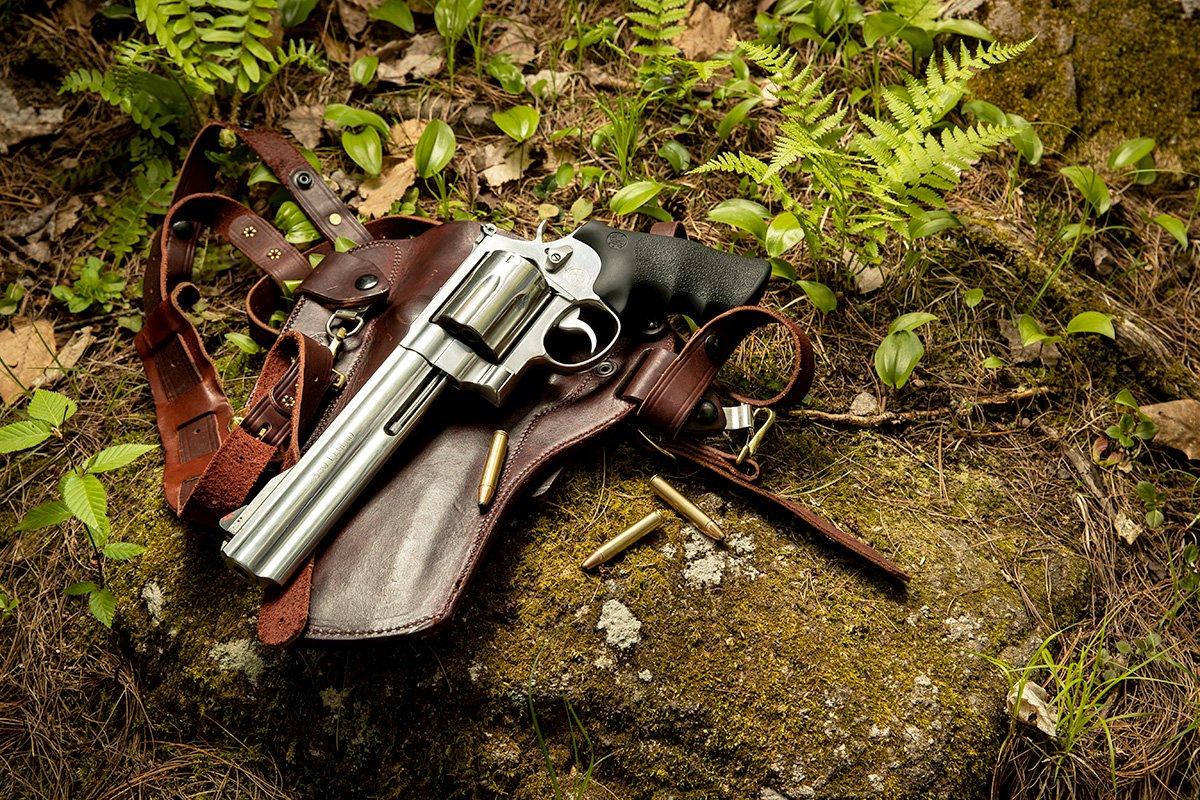
Hunting revolvers can be either single action, meaning the hammer has to be cocked before firing, or double action, which fires with each trigger pull or by hand cocking in single action style. Photo by Smith & Wesson
There usually is a difference in the grip shape as well. The single-action’s grip frame is a smooth curve, while the double-action has a more vertical “swelled” grip. Felt recoil is generally less with a single-action revolver because the grip tends to roll into the hand when shot, but some shooters prefer the feel of a double-action. It’s largely personal preference.
For years I shot single-action revolvers, specifically Ruger Super Blackhawk Hunters in .44 Magnum. Shooting Hornady’s 240-grain XTP Custom ammo, a load loved by just about any .44 Mag, I have taken several elk, many whitetails, and other big game, like black bears, too. I have also hunted a fair amount with a .454 Casull single-action revolver, and used one to shoot my first Alaskan brown bear followed by other big game species.
***Don’t Miss: *HOW TO GET PAID TO IMPROVE YOUR HUNTING LAND
SINGLE-SHOT PISTOLS
Back in Realtree’s early days, I hunted a lot with Thompson/Center Contender handguns, which were break-open single-shots chambered in rounds such as .30-30 Winchester, .375 Winchester, and wildcat cartridges like the J.D. Jones .309 JDJ. My Contenders were usually topped with either a Simmons or Thompson/Center 2.5-7x long eye-relief scope, and I used them to shoot a lot of whitetails on film for the early Realtree TV shows and Monster Bucks video series.
In 1995, while on staff with “Shooting Times” magazine, I introduced the T/C Encore. The Encore was a beefed-up version of the Contender single-shot. It was built to withstand the higher pressures of rifle cartridges such as the .308 Win, .270 Win, and .30-06 Springfield. In 1995 I drew moose tags in Maine and Colorado, and I used a .308 Win T/C Encore topped with a 2.5-7x long eye-relief scope to take the first animals shot with the new handgun. After taking both moose, I shot a really nice 6x6 Colorado bull elk with it as well.

Single shot handguns like the Thompson Center Contender and Encore pack rifle performance into a handgun frame, extending the effective range over traditional handgun hunting rounds. Photo by Larry Weishuhn
After my articles were published, Thompson/Center started calling me to return the handgun, but I refused! Finally, they insisted and I sent it back with the understanding I would get the first production gun, and I did. It was chambered in .30-06 and with that handgun, I shot a great number of big game animals here in North America and Africa as well.
I soon added other T/C interchangeable barrels in other chamberings for my Contenders and Encores. Back then I also hunted deer with a Remington XP-100 bolt-action handgun (no longer in production), chambered in .35 Remington, as well as Ruger Blackhawk and Redhawk revolvers, which are single-action and double-action, respectively. Though semi-automatics, particularly those chambered in 10mm auto, are popular with some hunters today, I’ve always preferred revolvers and single-shot handguns for serious hunting use.
***Don’t Miss: *WHAT WILL IT TAKE TO BEAT THE WORLD-RECORD WHITETAILS?
TIPS FOR NEW HANDGUN HUNTERS
I usually advise that new handgun hunters start with a .22 rimfire revolver, single or double-action, to learn the basics of proper grip and aiming. Practice shooting from various natural rests such as tree trunks, branches as well as using bipod and tripod shooting sticks. Once you are comfortable shooting a rimfire, step up a minimum of a .357 Magnum, but don’t shy away from larger rounds such as the .44 Magnum and .454 Casull, either. One perk of magnum revolvers is that you can usually shoot lighter recoiling, and less expensive, rounds through the same gun for practice. The .38 Special works in a .357 Magnum, the .44 Special in a .44 Magnum, and .45 Colt in a .454 Casull. Just be sure to practice and fine-tune with full-power hunting loads before hitting the deer woods.
Some people are blessed with eyes that can clearly see iron or open sights and the target. I am not one of those! Therefore, I use both red-dot sights and long eye relief scopes on my hunting handguns. Both have advantages. Red-dots can be shot with both eyes open and help with quick target acquisition. Long eye relief scopes provide magnification and help with more precise shot placement. I hunt regularly with both.
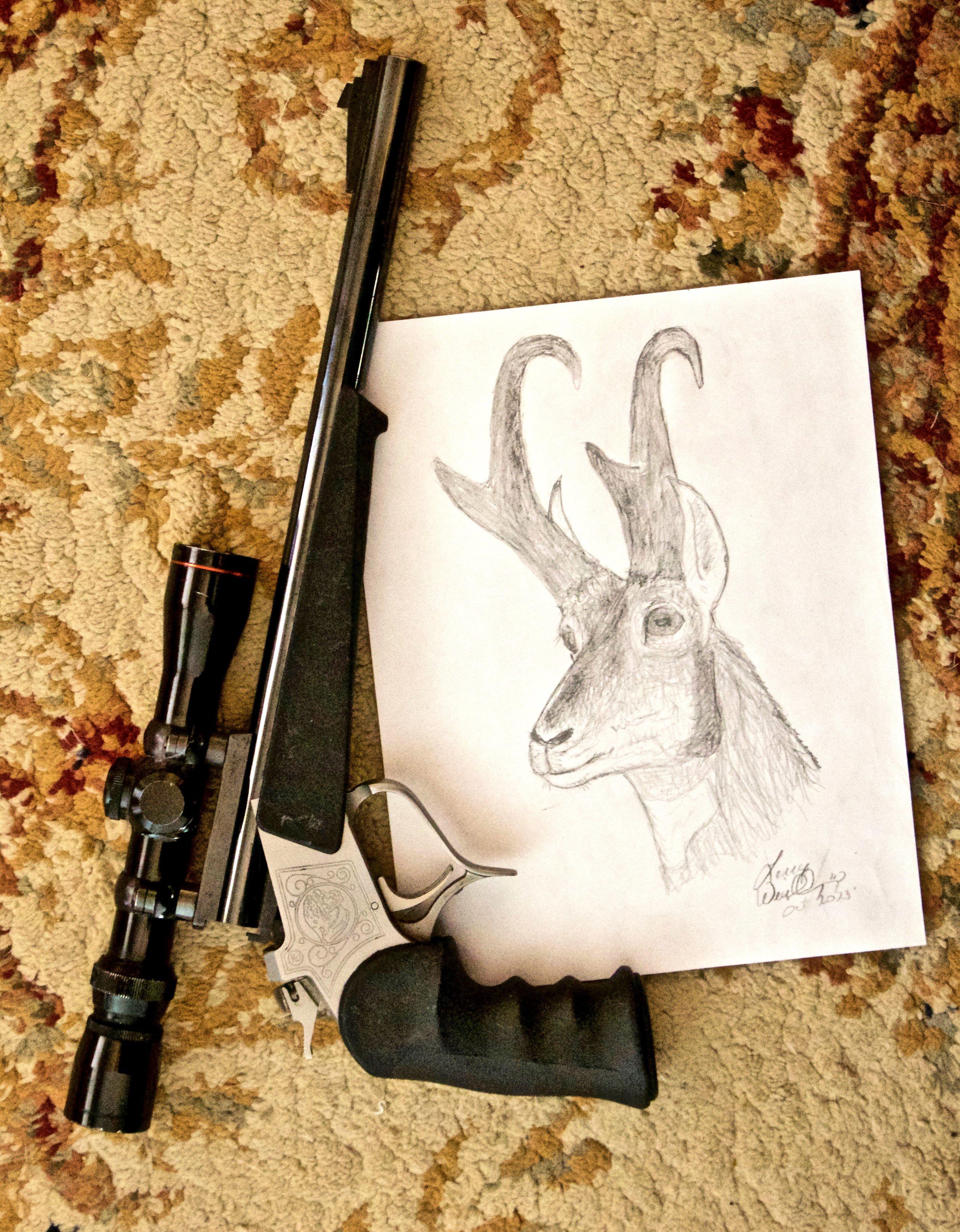
Topping your hunting handgun with a long eye relief scope or a quality red dot can improve long range and low light accuracy. Photo by Larry Weishuhn
Many dedicated handguns have optic bases built into the frame, so all you need to do is buy the appropriate rings for the optic you’re using. Other guns will require mounting a scope base that may require removing the rear sight from the gun. Be sure to investigate that before making a purchase, if you plan to hunt with an optic.
Compared to rifles, hunting handguns are certainly shorter and weigh less. These two factors can be truly useful and helpful in certain kinds of dense habitat and rugged terrain, especially if the handgun is carried in a shoulder or bandoleer-style holster, or even in a backpack. They can also be carried in holsters on your belt, though I much prefer to carry them in either of the aforementioned ways.
When shooting handguns, always wear hearing protection and protective glasses. Remember, when shooting a revolver, always keep your hand and fingers below and behind the back of the cylinder and trigger guard. Never place your finger or hand forward on the front part of the cylinder, where extremely hot and high-pressure gases escape when the trigger is pulled and the powder ignited.
Why would anyone want to hunt deer with a handgun, where the effective range is closer to a compound bow than a centerfire rifle? For the fun and challenge of it, of course. I truly believe once you start shooting and hunting with a handgun, you will find yourself wondering why you didn’t do so sooner. Then, like me, you’ll be hooked on handgun hunting for life!




